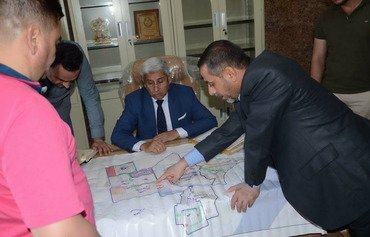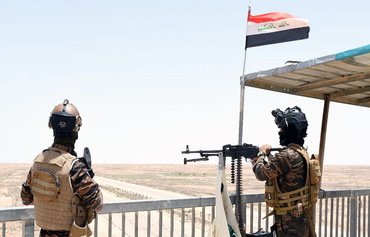Iraqi authorities launched a monitoring and surveillance system this month in the city of Rawa and its desert areas in western Anbar province to thwart "Islamic State of Iraq and Syria" (ISIS) attempts to infiltrate the city.
Rawa's local government is implementing the project in collaboration with security forces, which will involve installing sophisticated surveillance cameras and equipment inside the city and in its surrounding areas.
"We have been preparing to implement the system ever since we retook control of the administrative district of Rawa from ISIS, at the end of 2017," Rawa mayor Hussein al-Akidi told Diyaruna.
The city's location, which stretches along the Syrian border to the west, and the vast desert that surrounds it from all sides, drove its local authorities to "embark on this project to fully support security forces", he said.
The monitoring system, which was activated on March 5th, includes "dozens of thermal, high precision night vision cameras that have long distance detection capabilities, in addition to other surveillance and early warning equipment".
These devices are connected, he said, adding that a control and surveillance centre is located in the mayoral building with screens to display and record video and digital data.
Securing desert areas
The surveillance system is currently operating 24 hours a day, he said, and it will "hopefully reinforce the security situation in a way that would allow us to quickly detect any infiltration or suspicious movement that targets our city".
"It also will provide a more effective way to monitor the desert area surrounding the city and surveil any attempt on the part of the enemy to hide there or use the desert to launch missile attacks," he said.
The desert in Rawa, known as al-Jazeera, "has been secured, but not fully, due to its vastness and proximity to Syria", said al-Akidi.
Security forces with the al-Jazeera Operations Command and the 28th army brigade are constantly conducting pre-emptive missions to comb the desert, he said.
Without these operations, ISIS remnants "would have been able to find a foothold in the desert from which to threaten the city and the entire [Anbar] province", he added.
'Quality change'
The surveillance system is "a one-of-a-kind project and represents a quality change in the security sector", said Sheikh Riyadh Ammar Hameed, head of the mukhtars and a leading figure in Rawa.
"The system allows for close monitoring of our city, particularly from its western side, which we used to call the triangle of death because it was a key access point for terrorists over the past couple of years," he told Diyaruna.
Deploying cameras at the intersections of main roads and government headquarters in the city and on its outskirts ensures long-distance visibility even in adverse weather conditions, he said.
Representatives from the city's local administration and security forces located within the control and surveillance centre co-ordinate efforts and ensure rapid intervention in the event that any infiltration or security threat is detected.
Hameed stressed that security in Rawa has been stable since its liberation thanks to "search operations in the desert and intensive security deployment inside the city".
The citizens' increased trust in their security forces also plays a crucial role in enhanced stability, he added.
Replicating effort in other Anbar cities
Anbar provincial council security committee chairman Naeem al-Koud underscored the importance of working towards building surveillance systems throughout the cities of Anbar province, especially those close to the border.
"Using advanced surveillance technology such as thermal cameras has long been a demand of the provincial council," he told Diyaruna.
Such a system would help identify hostile targets and ease the burden on security forces, he explained.
"We are happy to have this technology in Rawa since this district lies at a crossroads between Salaheddine and Ninawa provinces to the north and east, and close to the border (with Syria) to the west," he said.
"We hope that all the cities of Anbar, particularly the border towns of al-Rutba and al-Qaim, will benefit from such projects to fully secure the western entry points to our province," he said.

![Military officials in Rawa observe the launch of a new monitoring and surveillance system in the city and its desert areas. [Photo courtesy of the Iraqi Ministry of Defence]](/cnmi_di/images/2019/03/28/17242-Iraq-Rawa-monitoring-600_384.jpg)






